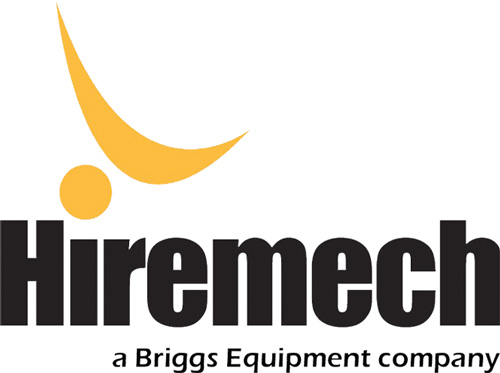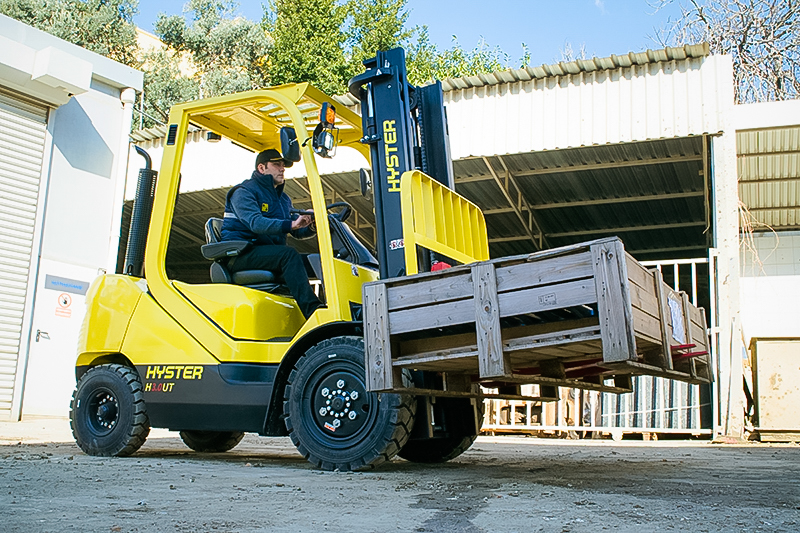Us Brits have always had a love-hate relationship with summer. We love the longer days and sunny skies but struggle with the heat and humid evenings. And it can be extra tough for those of us operating forklifts in extreme heat when malfunctions and overheating can become common headaches.
But like it or not, sweltering temperatures are becoming the norm. According to the met office, our 10 hottest years on record (which began in 1884) have all taken place since 2002. So, it’s crucial that you have robust a maintenance procedure to make sure your forklift survives when the mercury starts to rise. Luckily, these handy tips will ensure that working with your forklift in extreme heat is no sweat at all!
What do we class as extreme heat or a heatwave?
Before we start, it’s useful to know what we mean by extreme heat. That way you can identify days when you need to be extra vigilant with your forklift truck. In the UK, the Met Office has different heat thresholds for different parts of the UK based on their average summer temperatures. When the temperature exceeds these thresholds, it’s classed as ‘extreme heat.’ It becomes a heatwave when the temperature stays above these thresholds for an extended period of time (3 days).
The lowest of these thresholds (for regions including the South West and North England, Scotland, Wales, and Northern Ireland) is 25°C. Which is also the temperature that you can start having problems with your forklift. And it only gets worse as the temperature increases. According to the MCFA, your forklift’s battery capacity is reduced by 50% for every 10°C above 25°C! So, if you’re down in London (where the threshold is the highest at 28°C) you’ll need to be anticipating problems even before the heat is officially classed as ‘extreme.’
So, what problems might you encounter with your forklifts in extreme heat?
Is your engine constantly overheating? Does your battery life seem to be draining at an alarming rate? Maybe your tyres feel too bouncy and it’s making driving feel uncomfortable. Or perhaps a wire has broken causing you to come to a complete standstill. These are all problems that can affect your forklift when working in a heatwave but there are plenty of things you can do to try and avoid them.
Look after your battery
Extreme heat plays havoc on batteries of every kind. Which is why you might find that your smartphone seems just as sluggish and out of energy as you on a hot day. It should, therefore, come as no surprise that your forklift’s battery isn’t any different.
The reason being that extreme temperatures can cause your battery fluids to evaporate. This contributes to excess corrosion and makes your power levels drain at a much faster rate than normal.
So, even though checking your battery is no doubt already part of your regular maintenance checks, it is especially important that you check that your battery cells have the required water levels on hot days. If they don’t, then ensure that you top them up with water that is the appropriate PH for your machine.
Check your other fluid levels
And it’s not just battery fluid levels that you’ll need to keep an eye on during a heatwave. Making sure your coolant levels aren’t running low is obviously essential when using a forklift in extreme heat.
Ensuring that your hoses are fully intact with no loose connections is also vital to make sure your coolant doesn’t leak. You also need to make sure that you are using the correct coolant for your specific machine. If you don’t, then it can lead to corrosion or even blockages when different coolants are mixed together. This then actually contributes to rather than prevents your engine overheating.
Checking your oil levels is also vital to guarantee that your engine runs smoothly at all times. But this is especially important when it runs the risk of operating at higher temperatures in the summer months. A lack of oil could cause your engine to totally fail which is the last thing you want to be dealing with in the sweltering heat!
Prevention is better than the cure
Your forklift stands a better chance of surviving the summer months if you have a thorough daily maintenance routine. If your filters haven’t been cleaned out in some time or if your engine fan is damaged, your forklift will be unable to regulate the temperature effectively. This then makes a malfunction more likely.
Your engine belt is also key to maintaining consistent airflow. A worn or cracked belt will mean that both air and coolant is unable to flow effectively which again will lead to rising engine temperatures. Any previously damaged wires and cables are also much more likely to break completely in a heatwave. So, it’s best to get into the habit of replacing parts as soon as you notice any issues with them.
Making sure that all these checks are all part of your regular maintenance routine will ensure that you spot any issues early before they have a chance to cause any major problems. That way, if a heatwave does strike, you can be confident that your forklift is fully equipped to deal with the hot conditions.
What checks are specific to using a forklift in extreme heat?
Even if your forklift is in fantastic condition, there are still some extra checks and precautions you need to take in extreme heat. Starting with your tires. Monitoring the pressure of your tires is another check that you will be doing frequently in normal temperatures but it is essential that you keep an extra close eye on this if you are operating your forklift in a heatwave.
The reason being that the heat causes the pressure in your tyres to increase. So much so that it could lead to over-inflation. This can then cause uncomfortable, bouncy driving or even a tyre blowout. There may be days when you start work on a cool morning but by the afternoon the sun is shining and the temperature has soared. In these cases, you may want to recheck your tyre pressure again (even if you already check that day) as you may find that you need to release a little bit of air to maintain a safe level.
There are also some work-load related tips you can follow to help you forklift cope better in the heat. Driving slower, taking regular operation breaks and keeping well below load capacity where possible, can all help stop your forklift falling victim to overheating.
What else do you need to consider when working in a warehouse in extreme heat?
The majority of us will be mainly using our forklift trucks inside a warehouse, which means there are some additional problems we may encounter. During extreme heat, the roof of your warehouse can reach blistering temperatures and a lot of this heat will transfer inside (especially if your building is poorly insulated). As the sun moves around in the sky, hot spots can form throughout the day in different places, which can not only cause havoc with your forklifts but also potentially damage stock, destroy labels and cause barcodes to shrink. It could even pose a potential health and safety threat if certain materials are not being stored properly and overheat.
But there are some simple solutions that will help keep you and your forklift safe. If the temperature inside the warehouse is regulated, try to keep any gates or doors closed as much as possible. Otherwise, some of the cool air can escape.
If your warehouse has truck shelters, make sure you use them. These create a barrier between the warehouse wall and your truck so that it doesn’t absorb as much heat. Alternatively, make sure you store your forklift away from hot spots when it’s not in use. It’s also important that you keep your forklift truck away from the usual dust and debris that you find inside your warehouse. Although this can cause overheating at any time of year, it is especially important that your filter and radiator are not blocked when your forklift is operating in higher temperatures.
As the boss, ensure that your building is properly insulated, you have adequate cooling systems such as fans or air conditioners and consider upgrading to a ‘cool roof’ to keep both your machinery and employees safe.
Don’t forget about yourself
It’s not just your forklift that can find working in extreme heat a struggle. It’s important that you remember to look after yourself too. Make sure you stay hydrated throughout your shift and take regular breaks to avoid exhaustion or heat stress. But avoid drinking too much caffeine. Too many cups of coffee will increase your trips to the toilet which can lead to dehydration. Instead, stick to water or even milk which your body absorbs slowly, meaning it hydrates you for longer.
Avoid wearing heavy or dark clothing that can absorb more heat. Instead, wear something cool and loose-fitting so that your body has space to cool down. Try to wear breathable material such as linen or cotton where possible.
Try to organise your schedule so you are doing more difficult tasks in the cooler hours of the day where possible. And always seek help if you feel unwell. Signs of heat stroke include an extremely high body temperature, confusion, sickness, rapid breathing, headaches and increased heart rate. It is important that you seek medical attention if you experience any of these while operating your forklift in a heatwave or high temperatures.
Rest assured though, there is no need to fear working in the summer months so long as you are taking the proper precautions to keep you and your forklift safe. And with all that extra sunshine, who would want to be stuck in an office!
If you are looking for new forklifts for your business, for sale or hire, then get in touch with our team today.

 020 8880 3322
020 8880 3322